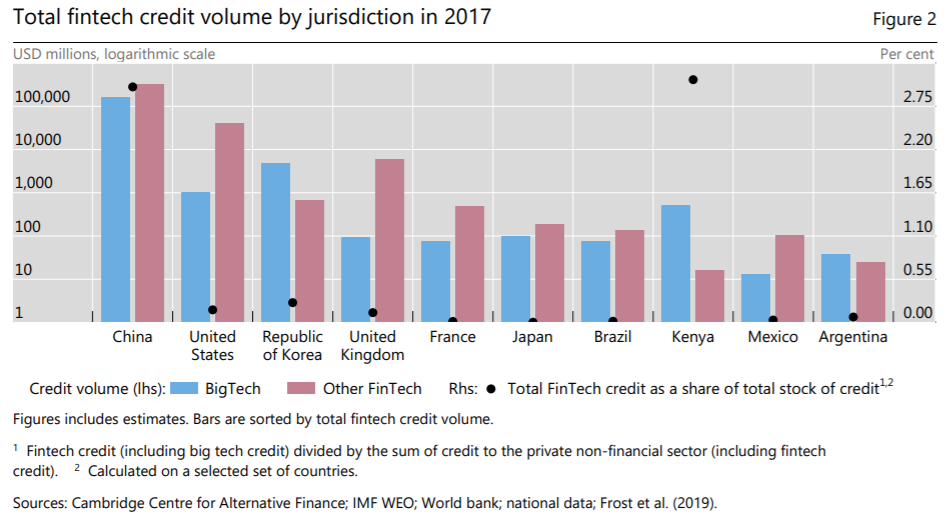Fintech is being adopted across markets worldwide – but not evenly. Why not? A recent working paper from the Bank for International Settlements reviews the evidence.
Overall, when compared with an incumbent financial system with assets of $382 trillion globally in 2017, fintech activity is tiny. Fintech credit extended in 2017, at $545 billion, is about 0.14% of the stock of global financial system assets. Similarly, even at the height of the speculative bubble in crypto-assets in January 2018, when the price of bitcoin surged to $20,000, this market was miniscule compared with existing financial assets.

In wholesale markets, like syndicated lending, derivatives markets, or clearing and settlement, fintech penetration remains low, notwithstanding potential applications of distributed ledger technology.
Findings: there is evidence that fintech adoption is higher where (i) there is unmet demand for financial services; (ii) macroeconomic conditions are supportive; (iii) regulation is accommodative; and (iv) demographic forces, such as a young population, are favourable, bolstering trust in new providers.
An implication is that, where fintech helps to enhance financial inclusion, this is likely to be positive for economic growth and development. Fintech activity could also increase cross-border competition in financial services over time. Finally, while fintech innovations can sometimes overcome specific market failures (eg by reducing information asymmetries or transaction costs) fintech activities will remain subject to the risks traditionally present in finance, such as liquidity mismatches, speculative bubbles, interconnectedness and, potentially, systemic importance.

